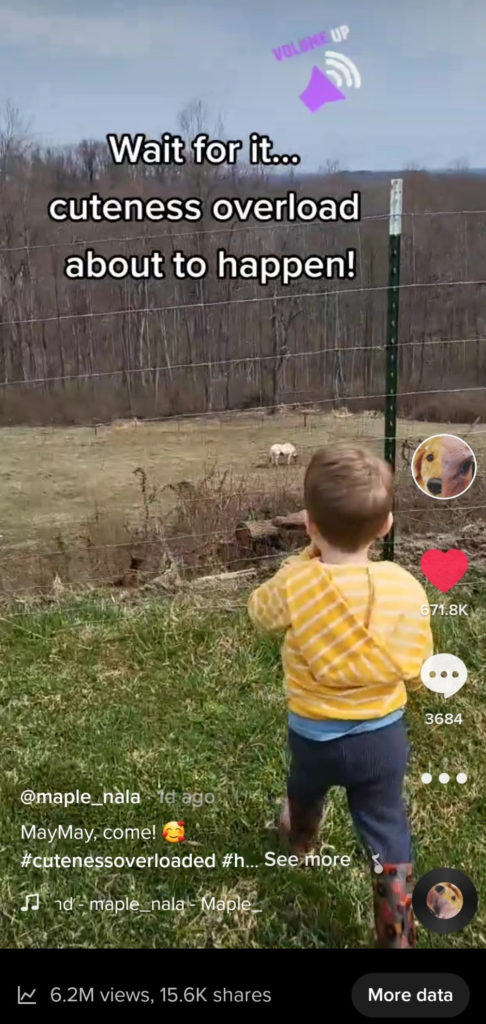Social media marketing is a critical component of any well-rounded content strategy. Solopreneurs and small businesses must master the art of creating relevant and interesting content for their ideal customers to drive growth.
With more than 100 social media platforms available, how do you know which ones are the most effective for achieving your goals?
It’s easy to become overwhelmed quickly at the thought of creating content for multiple sites. Spreading yourself too thin is never the right approach. You can crush your competition with a less-is-more social media marketing strategy that helps your brand shine online.
Our latest blog post answers the most common questions to guide you through the process.
Should I be on every social media platform?
Kaiya Williams, the founder and executive director of KAW Management Group, said she gets this question a lot from her clients. It’s mostly people who are newer to social media for business instead of personal use.
The short answer to the question is no.
“You definitely don’t need to be everywhere all at once,” she said. “It’s rare cases where you see a brand that needs to be or should be on every platform.”
Instead, she advises her clients to choose 1 to 3 social media platforms and focus their efforts there. That’s because most small businesses have limited resources. Maintaining an active and engaging presence on more than 3 channels is nearly impossible.
“My only exception is if they have a team of content creators who each specialize in different platforms, or if they’re comfortable with repurposing content. Otherwise, they’re going to get burned out,” said Williams.
Some other reasons why trying to have a presence on every social media platform isn’t necessary for small businesses include:
- Audience fragmentation. Different audiences and demographics hang out on different social media platforms. Small businesses should focus their energy on the 1 to 3 platforms where their ideal customers spend the most time.
- Inconsistent branding. Small businesses that spread themselves too thin across social channels risk struggling to maintain a consistent brand voice, visual identity, and community engagement.

How do I pick key social media platforms for my brand?
Creating a detailed customer persona is the most effective way to determine which social media channels you should focus on.
“It all goes back to your ideal client or customer persona,” said Williams. “If you’re not clear on that, then there’s probably already some challenges you’re seeing in your marketing because it’s not converting very well. Without that, your copy isn’t speaking to the right person.”
For instance, if your brand serves mothers aged 25 to 32, then it’s unlikely you should focus your efforts on TikTok.
Creating a customer persona
Creating a customer persona can feel overwhelming, especially for solopreneurs and small business owners who are wearing many hats. Answering the following questions can guide you through the process:
- Who am I trying to reach?
You need to get specific with this answer, right down to their age, location, job, interests, income level, and even gender identity. It’s OK if you end up with more than one customer persona. Sometimes businesses can reliably serve 2 to 3 distinct personas. - Where do they spend time online?
Once you know who you’re trying to reach, it’s time to find out where they hang out online. Are they more likely to be casual scrollers on Instagram and TikTok or active engagers on Facebook or LinkedIn? Target engagers for the best results. - What type of content and voice resonates best with them?
Do your ideal customers prefer bite-sized tidbits of information in videos or infographics? Maybe they engage more with long-form blog posts or podcasts. Once you have that nailed down, then you need to determine their favorite tone of voice so you can mimic it in your content.

Creating content that hits the mark
“When creating content, find what people like and keep doing it,” said Melina Oliver, the social media influencer behind Maples Neigh-borhood.
Oliver describes herself as an accidental sensation who went viral on TikTok for a simple video of her then 2-year-old son calling their horse in from the pasture. She wasn’t trying to go viral with the post. But once it happened, it was hard to put that genie back into the bottle.
She’s continued to create content that pleases her followers and monetizes her channels, noting the key to her success is simple. “Being authentic is always best. Don’t write a script. For me, just showing the authentic interaction between my son and horse is what people want to see.”
How much time should I commit to social media content creation?
This is always the million-dollar question for solopreneurs and small business owners who are already stretched too thin. Building organic awareness and engagement takes time. You can expect to invest at least 6 months into the process before seeing actionable results.
“You have to be patient,” said Oliver. “It takes a lot of time and effort to grow on social media and you will have ups and downs. Be patient. Be consistent.”
However, if you’re not getting leads and building a solid following after 6 months, it might be time to investigate all aspects of your content, not just how often you’re producing fresh stuff.
“Let’s say your ideal customer is on Instagram, but you’re writing entire books of blog posts in your captions,” said Williams. “So, no one is really reading that so it’s not converting.” Instagram is designed to appeal visually to your followers. High-quality images or videos – including Instagram Stories – work better than long-form text posts.
Another critical factor is learning how to use SEO keywords in your content. The Write Reflection teaches this method to solopreneurs and small business owners as part of our 1:1 content training. Williams agrees knowing how to SEO your social media is critical for gaining visibility. “SEO is becoming more important on Instagram, so are you engaging the right keywords?” she said. “If not, it might be a visibility issue, not that your people aren’t there.”
Ultimately, Williams said how long you invest in a particular platform depends on your available resources.
“Founders trying to manage social by themselves, this isn’t a great way to allocate your time,” she said. “Do some research and decide if you should table a platform or bump it down in your priority list.”


The section on marketing analytics was very practical.